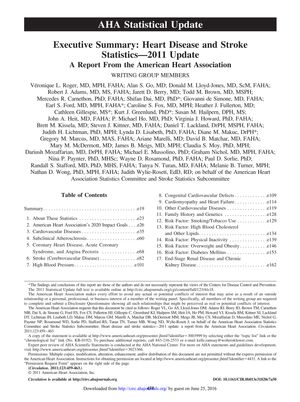Executive Summary: Heart Disease and Stroke Statistics—2011 Update
January 2011
in “
Circulation
”

TLDR Cardiovascular disease deaths decreased but still caused one-third of U.S. deaths in 2007, with high rates of hypertension, smoking, obesity, and diabetes.
The 2011 update from the American Heart Association revealed that although cardiovascular disease (CVD) death rates decreased by 27.8% from 1997 to 2007, CVD still accounted for 33.6% of all deaths in the U.S. in 2007. The report showed that 33.5% of U.S. adults had hypertension, and smoking rates were 23.1% for men and 18.3% for women. Obesity was a significant issue, with 67.3% of adults being overweight or obese, and diabetes rates increasing alongside obesity. The update also noted a 27% increase in inpatient cardiovascular operations and procedures over a decade, and the total cost of CVD and stroke in 2007 was estimated at $286 billion. Despite improvements, adherence to quality of care guidelines in hospitals was inconsistent. The AHA used the update to provide current data and emphasize the need for ongoing monitoring of heart disease and stroke.